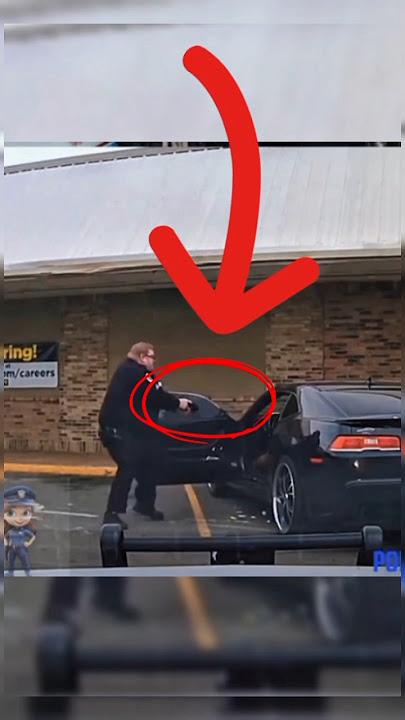What started out as an ordinary traffic stop on a Friday morning in Nashville soon unraveled into a dramatic and deadly confrontation that seemed more fitting for a crime drama than everyday reality.
Behind the wheel of a car linked to a wanted felon sat a woman who, at first glance, appeared cooperative—calm enough to lull suspicion. Yet within minutes, the interaction turned violent.
Body-worn and dashboard camera footage later released to the public captured a harrowing sequence of events, leaving observers to question whether this was a reckless act of desperation, an attempt to shield a criminal, or something even more complicated.
In mere seconds, a routine stop descended into chaos, leaving one officer severely wounded and a woman fatally shot, as the city grappled with the shocking outcome.

Authorities confirmed that the confrontation ended with the death of 31-year-old Nika Holbert, who opened fire on a police officer during the stop. The officer, though gravely injured, managed to return fire. The released footage has since shed light on exactly how the encounter spiraled out of control, but it has also raised difficult questions about how such tragedies escalate so quickly.
According to Metro Nashville Police, Officer Josh Baker pulled over a black Chevrolet Camaro around 9:30 a.m. on Friday. The car was registered to 42-year-old Demond Buchanan, a convicted felon wanted on six outstanding drug-related warrants. However, the man himself was not behind the wheel. Instead, it was Holbert—whose relationship to Buchanan remains unclear.

Video recordings from the officer’s body camera and patrol car show Baker speaking with Holbert before discovering a small bag containing a suspicious powder inside her purse. When Baker attempted to arrest her, she refused, repeatedly shouting that she had “done nothing wrong.”
The department’s chief, John Drake, later explained that the immediate release of the footage was intended to ensure public transparency in such a sensitive case.
As Holbert resisted, the tension escalated. She slipped back into the driver’s seat while Baker, in an attempt to stop her from fleeing, used his Taser. The device, however, did not subdue her. In the midst of the struggle, Holbert pulled a handgun. The footage captures Baker urgently yelling, “Ma’am, put the gun down!”—but the warning came too late. She fired directly at him.
The bullet struck Baker below his protective vest, causing a serious injury. Despite being hit, the 14-year veteran officer returned fire while Holbert sped away in the Camaro. She managed to discard her weapon but crashed just a block away. She was rushed to Skyline Medical Center, where she was later pronounced dead from a gunshot wound.
Though gravely hurt, Baker was able to radio for help, reporting “shots fired” and alerting dispatchers that he had been struck. He was transported to Vanderbilt University Medical Center, where surgeons operated on him. Officials later confirmed that he was in stable condition and expected to recover.
The Tennessee Bureau of Investigation has taken charge of the case, with plans to present its findings to the District Attorney once the review is complete.
Metro Police Chief John Drake defended Officer Baker’s response, pointing out that the officer tried multiple non-lethal measures, including verbal commands and a Taser, before firing his weapon in self-defense.
Meanwhile, Holbert’s adoptive mother, Lisa Holbert-Gooch, spoke publicly about the loss. She acknowledged that her daughter’s decision to draw a firearm against a police officer was wrong but expressed deep sorrow and unease about the way the incident unfolded. Her words reflected the complex grief of a family torn between acknowledging fault and questioning the fatal outcome.
This tragic confrontation highlights the razor-thin line between order and chaos during even the most routine encounters with law enforcement. The release of the footage provides much-needed clarity but cannot erase the haunting questions surrounding split-second choices made in moments of fear and panic.
For the police department, the case reinforces the daily risks officers face and their commitment to openness with the community. For Holbert’s family, it is a devastating reminder of how quickly resistance, mistrust, and fear can escalate into irreversible consequences. As the investigation continues, Nashville is left to reflect on the fragile balance between enforcement and escalation—where one decision can change lives forever.